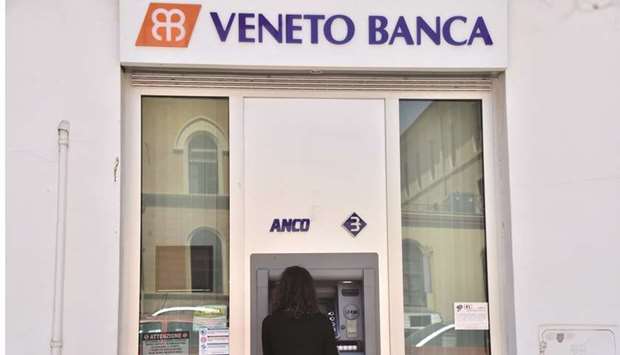The intervention at Banca Popolare di Vicenza and Veneto Banca includes state support for Intesa Sanpaolo to acquire their good assets for a token amount, Finance Minister Pier Carlo Padoan said on Sunday after an emergency cabinet meeting in Rome. Milan-based Intesa can initially tap about €5.2bn to take on some assets without hurting capital ratios, Padoan said. The European Commission approved the plan.
The agreement bolstered bank stocks across Europe, with Intesa leading gainers, while putting into question the effectiveness of European rules meant to ensure that private investors share the burden of bank bailouts. Just a few weeks ago, Spain’s struggling Banco Popular Espanol was wound down without state aid. Italy, which wants to avoid imposing losses on bondholders because many of them are mom-and-pop investors, is still in talks with European authorities to save Banca Monte dei Paschi di Siena, the world’s oldest bank, through a so-called precautionary recapitalisation.
In recent months, “bank intervention is specific to each troubled bank situation on its own conditions, with government and regulatory decisions on how to intervene influenced by multiple major macro factors,” said David Hendler, founder of Viola Risk Advisors, a credit analysis firm in New York state. “For global bank investors, the European banking sector and how to invest in it is very confusing, not uniform, and difficult to predict.”
The two lenders will be split into good and bad banks, with the firms open for business yesterday, Prime Minister Paolo Gentiloni said. Intervention was needed because depositors and savers were at risk, he said. The northern region where they operate “is one of the most important for our economy, above all for small- and medium-size businesses.”
While an additional €12bn will be available to cover potential further losses, Padoan said, the Italian Treasury estimates the fair value of the losses at about €400mn. That amount is already included in the funds provided to Intesa.
“Under current terms, this is a good deal for Intesa as it would increase earnings and market share at seemingly no cost to capital,” said Alexander Pelteshki, a fixed-income investment manager at Kames Capital. Intesa agreed to purchase the assets of the two banks for 1 euro, the lender said in a statement yesterday. The proposal excluded soured debt, higher-risk performing loans and subordinated bonds, along with shareholdings and other “legal relationships.” About 600 branches of the two lenders will be closed and 3,900 employees will exit.
Still, the intervention will safeguard other jobs at the banks as well as the savings of about 2mn households and the financial interests of 200,000 businesses, it said. The agreement gives Intesa the right to return certain risky but performing loans, with a face value of €4bn, to the liquidators should their quality deteriorate.
The Bank of Italy appointed administrators for the two banks, including former Monte Paschi chief executive officer Fabrizio Viola.
Italy ended months of talks with regulators turning to domestic insolvency law to liquidate the pair and making it easier to use public money to lubricate the process. The government tried for months to find a way to keep the banks afloat, including an appeal to wealthy businesspeople in the region to contribute to a rescue. Those efforts ended on Friday when the European Central Bank said the two banks are failing or were likely to fail and turned the matter over to the Single Resolution Board in Brussels.



